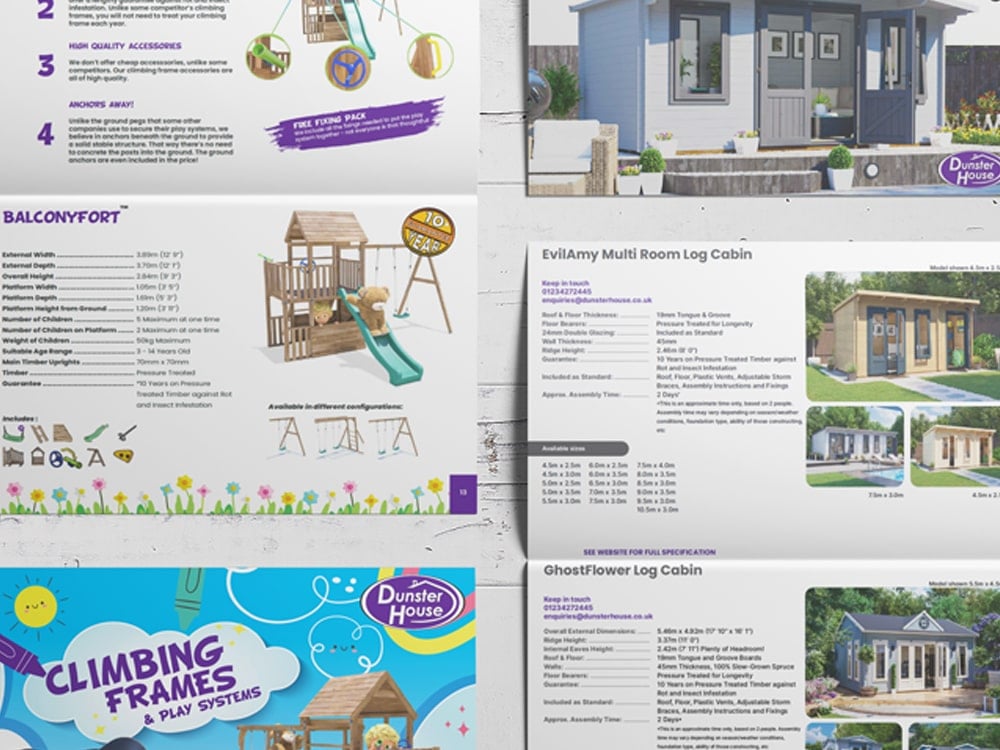Considering garden buildings and wondering whether you need planning permission for it in the UK?
When thinking about a new garden building it is important to regard Planning Permission and Building Regulations as two separate entities. It is vital to understand the difference, as one may apply to your situation whilst the other does not.
What are Building Regulations?
Building Regulations are essentially a set of standards that all buildings must meet. These range from the structure, to fire safety, to conservation of energy, and even drainage and waste disposal.
What is Planning Permission?
Planning permission tells you whether or not you are permitted to carry out works based on guidelines passed down from your local authority. This can be based on the appearance of the building or the effect it will have on the local environment.
Garden buildings without planning permission?
Due to the unique design of a Dunster House product, in the vast majority of cases you can install our garden buildings without the need for planning permission. However, there are a few exceptions. So we do recommend that you seek advice from your local planning office before making a final purchase.
Where can I find more information on Planning Permission?
Please read on for more information. The information is preliminary advice and is our interpretation of publicly available information. Please see Planning Portal for advice from the UK government, or contact your local planning office.
Building Regulations
First, a definition from the Planning Portal website:
“Building regulations are minimum standards for design, construction and alterations to virtually every building. The regulations are developed by the UK government and approved by Parliament.”
Building regulations can be complicated. But for most purposes that apply to our customers, they are defined by: use, size of the building, and location. So, providing you meet the criteria below which considers how big the building is, what you want to use your garden building for, and where you will site it.
Please be aware that Dunster House buildings are not designed to meet building regulations. This is because the overwhelming majority of our customers do not need to meet them. Nevertheless, your circumstances may be different. So if you are buying one of our buildings, then you should ensure that in your own circumstances you are not going to use the building in a way that will require building regulations.
Building regulations are of course meant to apply to larger, more heavily used buildings than your typical garden building anyway (such as houses, hospitals, factories etc). So there is nothing wrong in ensuring that the way in which you use your garden building simply avoids the need to meet them.
Use Classes
Our buildings do not need to be designed or constructed to meet building regulations as it is possible for them to gain an exemption under one of the following use classes. You must decide which use class most accurately suits the purpose for which you are going to use the building.
Take a look at the relevant sections of ‘The Building Regulations 2010” to read more about each use class.
| Approved Document | Name |
| A | Structure |
| B | Fire Safety |
| C | Site Preparation and Resistance to Contaminants and Moisture |
| D | Toxic Substances |
| E | Resistance to Passage of Sound |
| F | Ventilation |
| G | Sanitation, Hygiene and Water Efficiency |
| H | Drainage and Waste Disposal |
| J | Combustion Appliances and Fuel Storage Systems |
| K | Protection from Falling, Collision and Impact |
| L | Conservation of Fuel and Power |
| M | Access to and Use of Buildings |
| N | Glazing |
| P | Electrical Safety |
| Q | Security |
Regarding Part L. As none of our buildings exceed 50 square metres in useful floor space, Part L requirements do not apply!
Regarding Part P, and the classes from which the class of work is not exempt. You must ensure that you carry out any electrical installations according to the regulations. We say this specifically as a lot of our customers like to wire in their own electrics for lighting and mains power.
The above information is a guide only and not legal advice. You can make your own checks by reading further at Government Planning Portal.
Planning Permission UK
Ultimately, what you are trying to achieve from this point of view is for the installation of your garden building to be classed as “permitted development.”
The permitted development rules define a set of criteria which, if the development matches, you do not need planning permission. This means there is an easy guide or checklist you can follow, and if your plans for development match, you will not need planning permission.
The Planning Portal Website has a handy mini-guide which explains what would be considered as permitted development.
Most Dunster House garden buildings will fall under ‘Permitted Development’.
Disclaimer: this is an introductory guide and not a definitive source of legal information.





